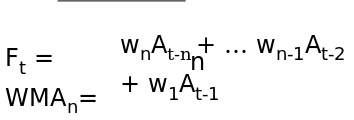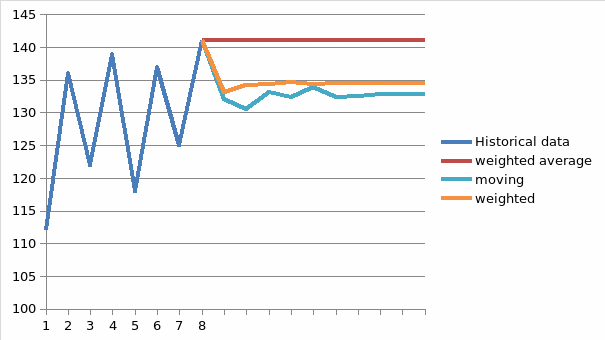System Operation and Control
Sales forecasting is the estimated dollar or unit sales volume for a specific future period expected to be achieved because of a proposed marketing program. There are different methods used to make sales forecasts (Sykronix).
Naïve Forecast
Naïve forecast as the name implies is the simplest form of making the sales forecast. It assumes that the forecast for the next period is the same as that of the last period. This method does not look at the past data but only at the present data (Sykronix). The last observation in the given data is 141, so naïve forecast can be taken as 141 in respect of the future periods. The relevant formula is:
- F(t) = A(t-1), where
- A(t-1) Actual figure for period t-1
- F(t) Forecast figure for period t
Advantages of Naïve Forecast Method
- The method is very simple and easy to adopt.
- The forecast can be done at virtually inexpensively
- The forecasts can be arrived at quickly and can be prepared easily
- It is easy to understand the method.
- The accuracy standard for the forecast can be maintained through Naïve Forecast
Moving average Method
Under this method, the forecast value is calculated as a simple average of the values pertaining to the previous periods (Investopedia). In the given problem, we will use 5 periods as suggested in the question. The formula for calculating the moving average is:

Advantages of Moving Averages Method
- The method is still quite simple to adopt.
- The peaks and trough values are smoothened to arrive at more or less precise forecast values with the given observations
- The method is quite adaptive
- The method can be considered appropriate for forecasting ‘stable’ variables. Stable variables imply the values that do not fluctuate too high or too low but flows rather across some average value.
Weighted Moving Average Method
In this method instead of using a simple average weights are assigned to each observation of the previous periods (Investopedia). In the given illustration, we will assign weights for four past observations for calculating the weighted moving average. The formula here is:

Advantages of Weighted Moving Average Method
- It is possible to can assign more weight to recent observations. This is advantageous since the recent observations tend to reflect the current trends of the market/industry due to current changes in the economic environment.
- This method also smoothens values for peaks and troughs in a given set of observations.
The calculations are done in the attached excel sheet and the following table presents the values for easy reference. For comparing all the different observations, the forecast values are plotted in the following graph.

References
Investopedia. (n.d.). Moving Average. 2009. Web.
Investopedia. (n.d.). Weighted Moving Average. 2009. Web.
Sykronix. (n.d.). Personal Selling: Forecasting. 2009. Web.